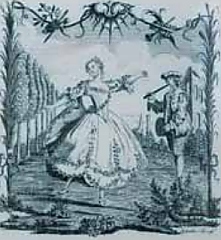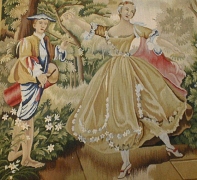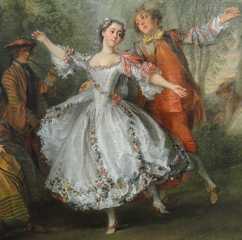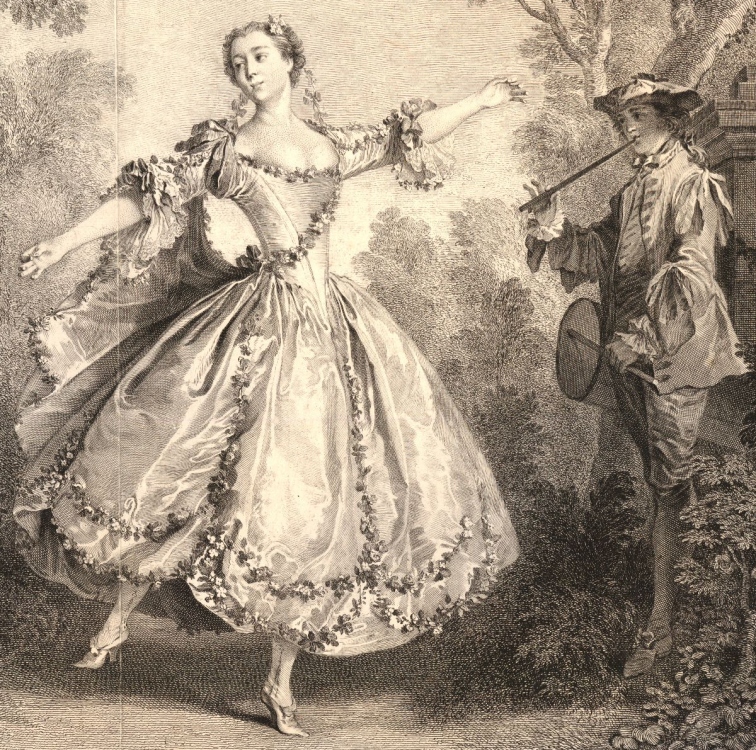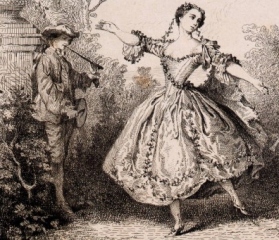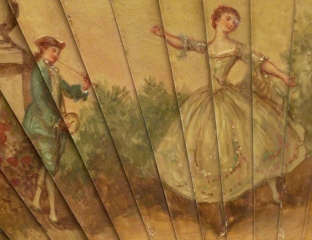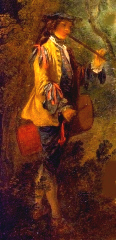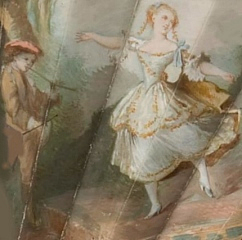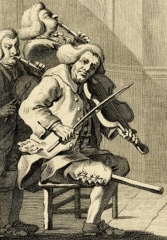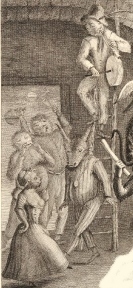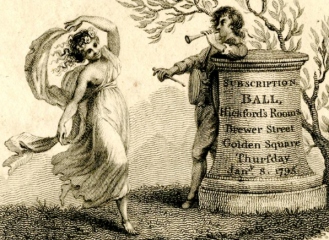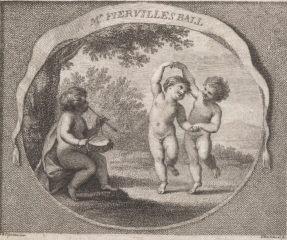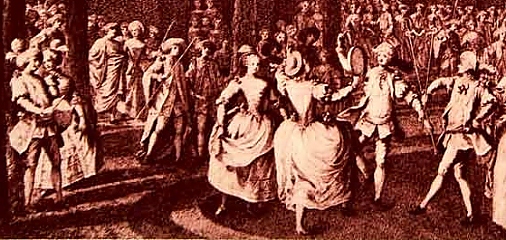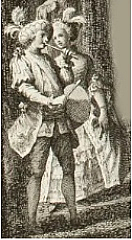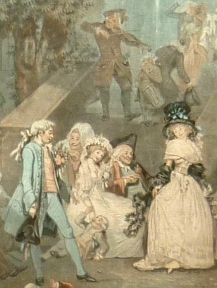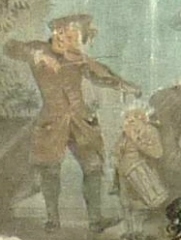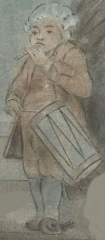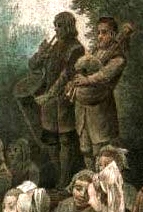aristocratic and upper classes dance England |
|
French and English court culture were intertwined until 1804 when Napoleon crowned himself.
So in the 18th century,
when it became fashionable for French aristocrats and the nobility to glorify
the 'simple' peasant lifestyle, the vogue also
spread to England. Marie Antoinette, Queen of France,
lead the way playing at being a rustic peasant dressed in costly clothes.
As a result many village and
shepherd instruments, including the pipe and tabor, were played and danced to in highly stylised
fashion in the most grandiose palaces of France and England. This proved to be a good subject for satire. |
1759
“Musicians made a living by hiring themselves out through agents for balls and private functions.
At Bedford House in 1759
an agent was paid 14 guineas to supply 3 ‘violas’, a hautboy (oboe?)
a pipe and tabor and two basses for a ball.”
quoted in Sheila M Nelson, “The Violin and the Viola” Dover, page 122 |
1710 Description of a ball at Dudley Castle
As “recounted by her grandmother in 1776: While the band kept up the spirit with harp, pipe, tabor
and violin the floor
rocked beneath the quick and measured steps of the gay company engaged in the dance....
that distinguished company
...consisted of the nobles of the land. The ladies shone with glossy silks and jewels
and the gentlemen with gold and silver lace....”
as reported in the County Advertiser & Herald for Staffordshire and Worcestershire - Saturday 16 February 1884 |
1746 newspaper report from London  Stamford Mercury - Thursday 12 June 1746 Stamford Mercury - Thursday 12 June 1746 |
Letter 76 To George Montagu, Esq. Strawberry Hill, May, 14, 1761
“Saturday morning, Arlington Street. I came to town yesterday for a party
at Bedford-House,
made for Princess Amelia;
the garden was open....... The tables were removed, the young people
began to dance to a tabor and pipe;
the Princess
sat down again, but to unlimited loo; we played till three”
Letters of Horace Walpole, (1717-1797) - Volume 3 |
|
1793 “Her Majesty gave a grand entertainment for a select party of the nobility at Windsor”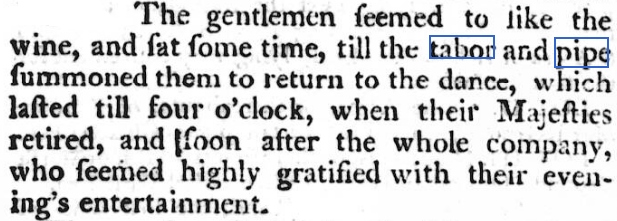 Bury and Norwich Post - Wednesday 16 January 1793 Bury and Norwich Post - Wednesday 16 January 1793 |
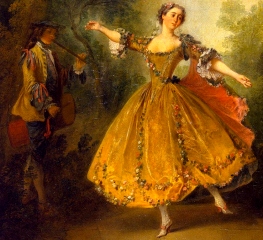 1732 painting by Lancret, France
'Mlle Camargo Dancing' 1732 painting by Lancret, France
'Mlle Camargo Dancing' |
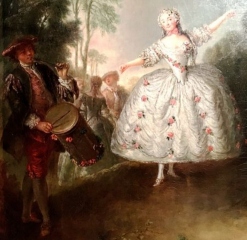 1750 painting by Pesne Marianne Cochois 1750 painting by Pesne Marianne Cochois |
|
|
|
|
| |
middle classes dance England |
|
The eighteenth century saw the rise of the middle class, and more leisure time for studying the arts.
At home young people were
expected to play an instrument and sing, while they could demonstrate
their dancing skills at the local Assemblies. [source] |
|
 the taborer
behind the taborer
behind
the other musicians |
1762 ‘The Vicar of Wakefield’ : a ball at home:
“after a little shoving and dragging, they at last went merrily on.
Our music consisted of two fiddles, with a pipe and tabor.”
by Oliver Goldsmith (1730 – 1774) [ ch 9, page 57] |
|
1762 ball as reported in Ireland: Dublin Courier - Wednesday 16 June 1762 Dublin Courier - Wednesday 16 June 1762 |
1763 as advertised
“27th A Ball at the King’s Head NB the French Horn will accompany the minuets:
and the tabor and pipe the Country Dances"
The Ipswich Journal - Saturday 23 July 1763
|
1767 February 3 1767
"I spent the Evening & Supped at Ansford Inn, there being a Masquerade Ball there this Evening, and very elegant
it was, much beyond my expectation in all respects - We did not break up till five o'clock in the morning...
Admiral Hunt was Beau Nash & Master of the Ceremonies - I played at Cards part of the Time & won -0-1-0
I did not dance the whole Evening - We had good Musick viz, four Violins, a Base [sic] Viol, a Taber & Pipe,
a Hautboy and a French Horn played by Mr. Ford"
[pp. 67-68] |
1767 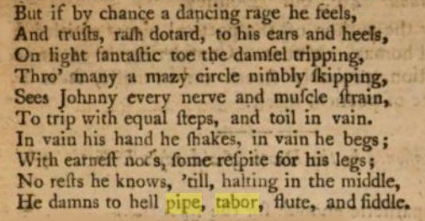 London Review - Volume 5 Page 237 London Review - Volume 5 Page 237 |
| |
|
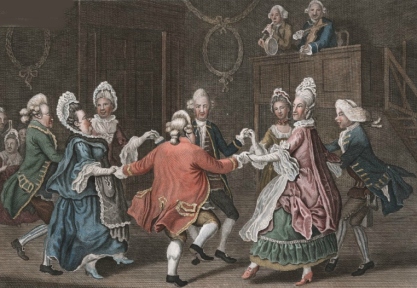 1771 dancers 1771 dancers |
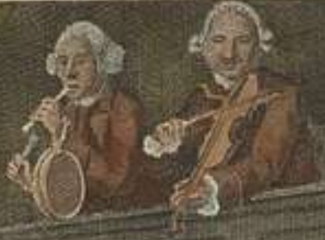 1771 the band (different print) 1771 the band (different print)
|
In London dances were held at theatres during the 18th century. Pipe and tabor players were hired on occasion:
there is one record
at the theatre for 1749, two in 1767 and one in1768 at the Covent Garden Theatre.
Between Dec 1774 and Nov 1775 there were 59 nights when the pipe and tabor player was hired at
Theatre Royal Drury Lane for dances.
1776 'The New Bath Guide: AN ELECTION BALL, IN POETICAL LETTERS
‘Letter 2’ Mr. Inkle to Mrs. Dinah Inkle, at Glocester' by Christopher Anstey page 221
“…And who at the Ball on that Night did appear,
Who danc'd in the Van, and who limp'd in the Rear,…
…At what Time they heard the Men puff and belabour
With Mouth, Stick, and Fist, the gay Pipe and the Tabor,…” |
1781
KING'S THEATRE, HAYMARKET.
"After L'Omaggio was concluded, a cold collation was served... After the company had supped, they danced
cottilions [sic], minuets, and country dances. We left them perfectly happy, footing it, in short time, to the harp,
tabor and pipe, and violin, at three this morning."
Morning Chronicle 6 June 1781 |
1783 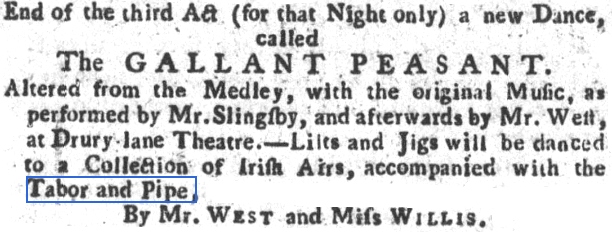 reported in the Norfolk Chronicle - Saturday 10 May 1783 reported in the Norfolk Chronicle - Saturday 10 May 1783 |
In Bath the pipe and tabor was added to the orchestra on ball nights.
1791 as reported in the Bath Chronicle and Weekly Gazette - Thursday 17 November 1791 
The Season ran from October to early June. The Upper Rooms held two balls a week, a dress ball on Monday
nights and a fancy ball on Thursday nights. Fancy Balls were much more relaxed occasions. Ladies could appear
in hats or make any other elegant fashion statement they pleased. The band consisted of twelve performers including
the harp, tabor and pipe. 'Each performer to be allowed a sum not exceeding half a guinea on each ball night for his
attendance, which money is to be taken from the subscription of the respective balls'.
[Quoted in Bath Chronicle and Weekly Gazette - Thursday 27 May 1886]
Poems were made up describing people dancing to the pipe and and tabor [cannot find my source at present - ed]. |
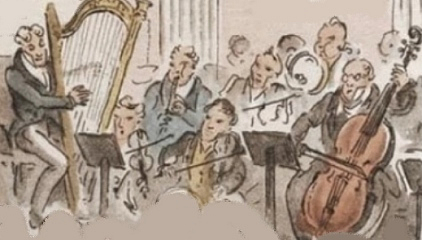 English orchestra with someone playing a one-handed pipe in the left hand English orchestra with someone playing a one-handed pipe in the left hand
Lewis Walpole Library |
|
|
1777 'A familiar epistle ... addressed to the ladies'
“But if by chance a dancing rage he feels,
And trusts, rash dotard, to his ears and heels,
On On light fantastic toe the damsel tripping,
Thro' many a mazy circle nimbly flapping,
Sees Johnny every nerve and muscle strain,
To trip with equal steps, and toil in vain.
In vain his hand he makes, in vain he begs
With earnest nods, some respite for his legs
No rest he knows, 'til halting in the middle,
He damns to hell pipe, tabor, flute, and fiddle.”
A FAMILIAR EPISTLE, TO C. W. BAMPFYLDE, GENTLEMAN
by Anstey, Christopher, 1724-1805[ line 197 |
|
|
'personalities of social, political, literary, and artistic life took so much ......
'In this manner, and in these sets, rapidly, gaily, uncounted, and untutored, ......
a BALL, (With proper Musick accompanied with the Tabor and Pipe.) .....
The Great Dr. Burney, His Life His Travels, His Works His Family and His Friends
Vol. 1 Book by Percy A. Scholes; 1948 |
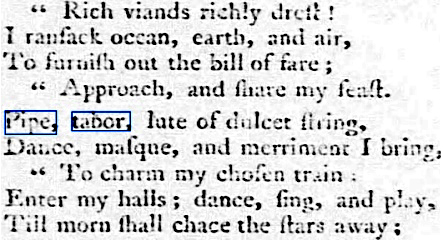 |
‘Wealth and Poverty, an allegory’ (part)
Caledonian Mercury - Saturday 08 August 1778 |
|
| |
middle classes dance France |
|
|
| |
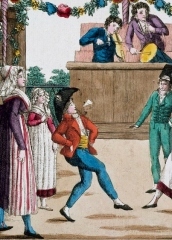 France France |
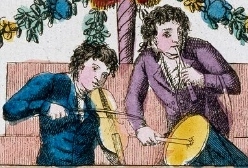 the band the band |
|
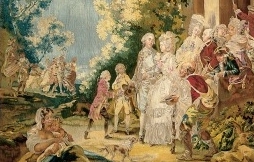 1778 tapestry of a wedding, France 1778 tapestry of a wedding, France
[dancing to pipe and tabor in background, left] |
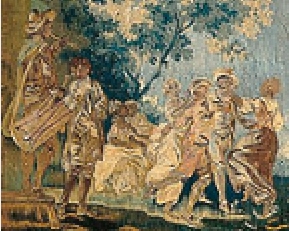 close-up of player and dancers close-up of player and dancers |
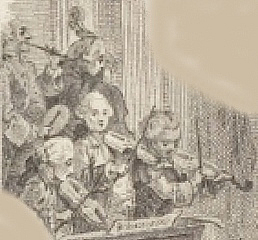 1774 a high society ball, by Duclos, Paris, France 1774 a high society ball, by Duclos, Paris, France |
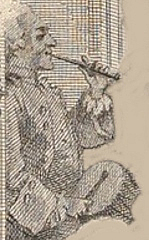 close-up of player close-up of player |
|
| |
working classes dance France |
|
| |
“If the peasants in the neighbourhood of any chapel dedicated to a saint, whose day
is to be celebrated, have a mind to make a festin, in other
words, a fair, they apply to the commandant of Nice for a
license, which costs them about a French crown. This being
obtained, they assemble after service, men and women, in their
best apparel, and dance to the musick of fiddles, and pipe and
tabor, or rather pipe and drum.
c 1766 'Travels Through France And Italy' by Tobias Smollett book 4 |
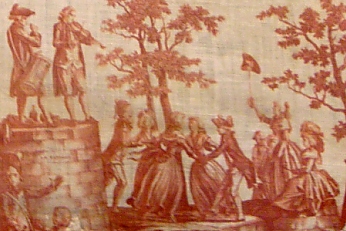 1792 fabric depicting the Fall of the Bastille 14th July 1789, 1792 fabric depicting the Fall of the Bastille 14th July 1789,
Jouy-en-Josas |
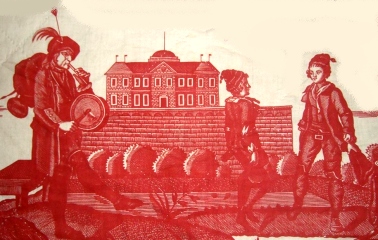 Record also here Record also here
Toile, red, on linen: probably a quilt fragment. 1790
Pipe and tabor player for two male youth dancers.
Frederick R. Selch Collection of American Music History
Inventory of Series 2: Visual Materials |
|
|
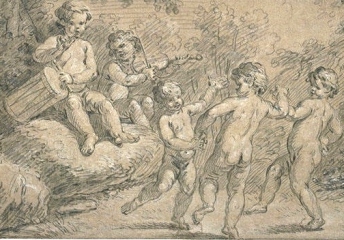 France France |
working classes dance England |
|
| |
1719 from: SONGS Compleat, Pleasant and Divertiv; SET TO M U S I C K
...Each bonny Lad shall with his loving Lass,
With Pipe and Tabor trip it on the Grass ;
With Chaplets gay my Jenny shall be crown'd,
And with her Loving Jockey 'Dance around : ...
By Dr. JOHN BLOW, Mr. HENRY PURCELL, and other Excellent Masters of the Town
|
1719 Songs Compleat, Pleasant and Divertiv ;
JOAN to the MAY-POLE.
Come Will, run Gill,
Or dost thou list to lose thy labour ?
Kit Crowd, scrape aloud,
Tickle her Tom\ with a Pipe and a Tabor,....
.... If the Tabor do play, we thump it away,
And turn, and meet our Lasses to Kiss 'em...
SET TO M U S I C K By Dr. John Blow, Mr. Henry Purcell,
and other Excellent Masters of the Town |
1760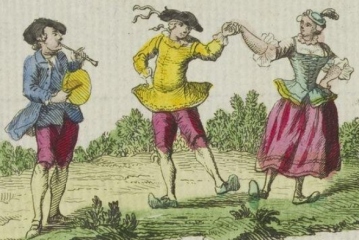 © Victoria and Albert Museum, London © Victoria and Albert Museum, London |
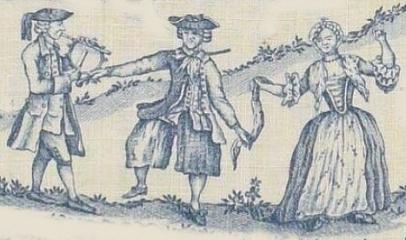 1770 handkerchief (detail) 1770 handkerchief (detail)
© Victoria and Albert Museum, London |
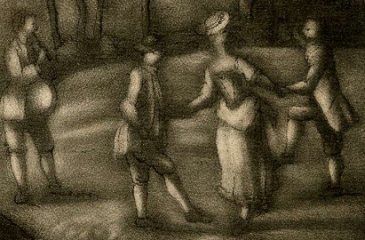 1766 -1775 (from the background) 1766 -1775 (from the background) |
|
|
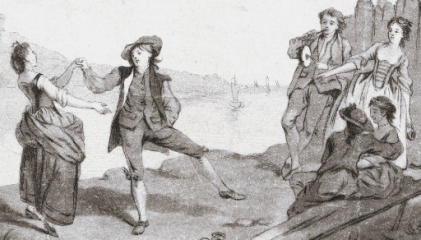 1780 1780 |
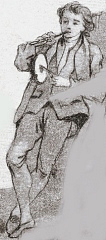 close-up of player close-up of player |
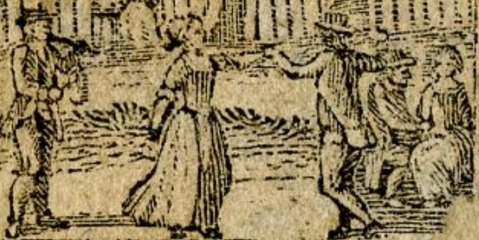 1781 1781 |
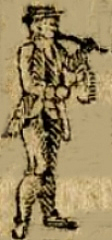 close-up of player close-up of player |
|
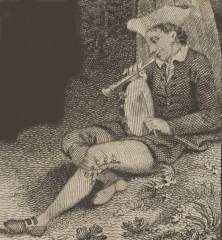 close-up of player close-up of player |
|
1780's The Shepherds Holyday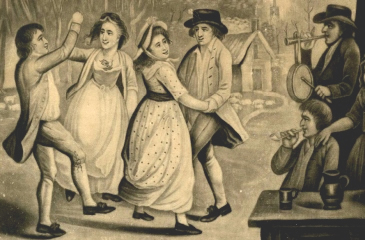 |
ARCADIA. A DRAMATIC PASTORAL.
THE Managers of Drury-Lane Theatre...the following little piece was written merely with a view of
mani|festing such their loyalty and gratitude, to the best of monarchs
"To the pipe and tabor beat
Frolic measures with your feet.
Ev'ry gift of time employ;
Make the most of proffer'd joy.....
So may all thy sylvan train,
Dryad, nymph, and rustic faun,
To the pipe and merry strain,
Trip it o'er the russet lawn!
May no thorn or bearded grass
Hurt their footsteps as they pass"
Poems. By Robert Lloyd, A.M: (1733-1764) page 264 |
1783 Entertainment in a Field near Busby Street, Bethnal-Green, London:
“After Dinner there was a Ball on a Platform before the Tents,
with Violins, Tabor and Pipe, French Horns, Cymbaiines and other Music.”
Derby Mercury - Thursday 26 June 1783 |
1789
“The pipe and tabor, violin and harp,
When dance and merriment occasion yield,
Cheer his glad soul; the boards resound the time;
Twin'd with the jumping lass with springing
He skims and floats, with ease, along the floor;
Graceful his step, in every feature joy; “ ....
from: The College Hero, The Gentleman's magazine, Volume 59, Part 1, May 1789 |
1798 poem 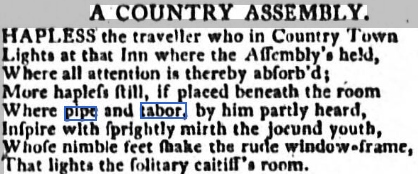 Bath Chronicle and Weekly Gazette - Thursday 30 August 1798 Bath Chronicle and Weekly Gazette - Thursday 30 August 1798 |
|
| |
|
1777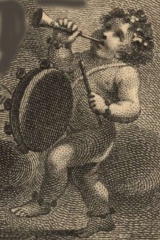 Putto playing for a dancing girl Putto playing for a dancing girl |
| |
for other types of dance see:
the last dance of all (dance of death)
England: Regency dancing
Europe decorative arts: moresca
England: morris dancing
England:Victorian dance |
|
|
|
|
 September 1761 Newspaper report of a ball in London
September 1761 Newspaper report of a ball in London  Bury and Norwich Post - Wednesday 16 January 1793
Bury and Norwich Post - Wednesday 16 January 1793 Dublin Courier - Wednesday 16 June 1762
Dublin Courier - Wednesday 16 June 1762
 London Review - Volume 5 Page 237
London Review - Volume 5 Page 237 1771 dancers
1771 dancers 
 France
France
 Bath Chronicle and Weekly Gazette - Thursday 30 August 1798
Bath Chronicle and Weekly Gazette - Thursday 30 August 1798 Putto playing for a dancing girl
Putto playing for a dancing girl


